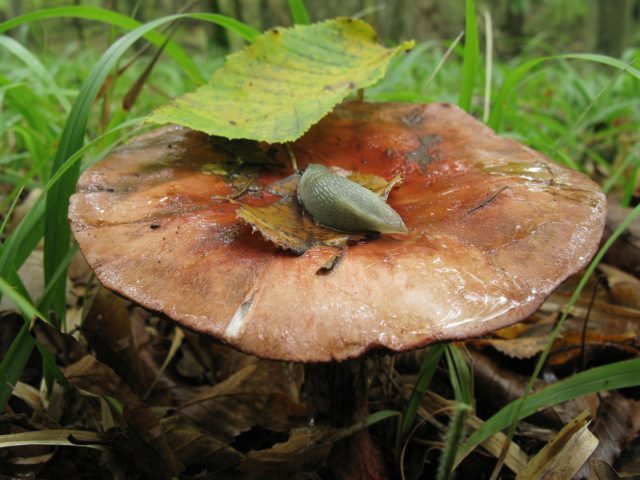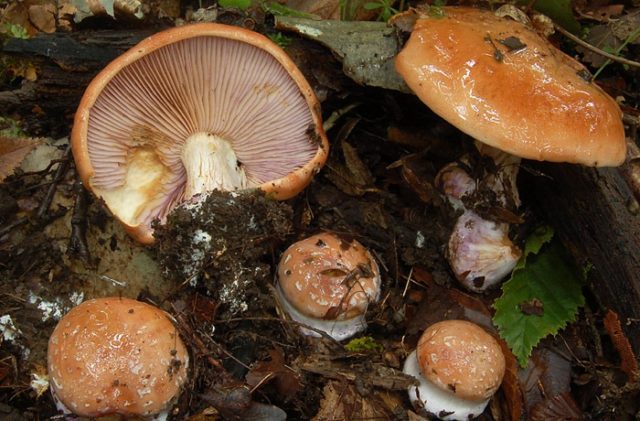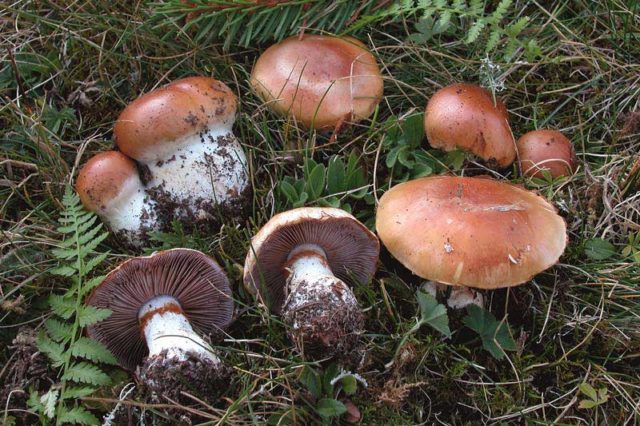Content
The red-olive spiderweb belongs to the Spiderweb family. In the common people, it is customary to call it a fragrant or smelling spider web. The Latin name is Cortinarius rufoolivaceus.
Description of the red-olive spider web
The mushroom is relatively small in size and has a thin leg with a distinctive feature: a cobweb blanket. The cap of the fruiting body is slimy.
Description of the hat
The cap of the mushroom reaches 7 cm in diameter. As it grows, it changes: in young red-olive cobwebs, it is hemispherical, then gradually becomes convex. In adult fruiting bodies, the cap is flat. Its color scheme is varied, as it grows, it changes from purple to red, while maintaining the same shade. In the middle, the hat is purple-purple or reddish in color of varying intensity.

In older specimens, the cap is pink at the edges due to burnout.
The hymenophore in reddish-olive spiderwebs is in the form of plates having a descending or toothed-adherent shape. In young fruit bodies, they are olive or purple, as they mature, they become brown in color.
The spores are dark reddish, oval in shape, small in size with a warty surface. Sizes range from 12-14 * 7 microns.
Leg description
The maximum size of the leg in adult specimens is 11 * 1.8 cm. It is cylindrical in shape, the base is widened, and has a reddish tint. The rest of the length of the leg is purple. Its surface is smooth.

The length of the leg in this species reaches 5-7 cm
Where and how it grows
This species is widespread in Europe, it prefers mixed or deciduous forest plantations.
Due to its ability to form mycorrhiza with trees, it occurs in nature in the form of large groups. It grows more often under oak, beech or hornbeam.
In Russia, the red-olive spider web is harvested in the Belgorod and Penza regions, it also grows in Tatarstan and Krasnodar. There are specimens and in places where calcareous soil, moderately warm climatic conditions.
Is the mushroom edible or not
The nutritional properties of the species are practically not studied, but it belongs to the category of conditionally edible. The pulp is bitter, olive-greenish or pale purple in color. Mushrooms have no special aroma. Recommended for food fried.
Doubles and their differences
Outwardly, fruiting bodies have an icteric spider web: the cap of the latter is brown with a pink or orange tint. But the double has purple plates and legs, and the flesh is bitter.

The twin is conditionally edible, but due to its low taste, it does not represent nutritional value
Conclusion
The red-olive webcap is a mushroom listed in the Red Book. It is conditionally edible, but it is practically not used for food, since its flesh is bitter. Occurs in coniferous-deciduous forests from mid-summer to October.









